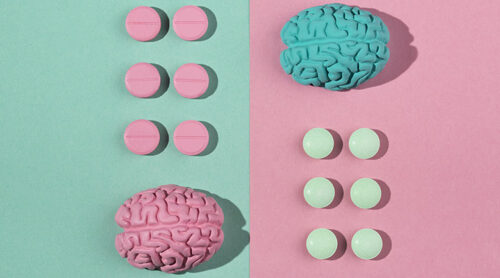MDMA assisted-therapy

What is MDMA?
Whether out of interest in alternative therapies or through media, we’ve all heard of MDMA or its street names, ecstasy or Molly.
It is actually a synthetic molecule (Methylenedioxymethamphetamine) belonging to the amphetamine family. It has been the subject of several recent scientific studies. Indeed, it has been discovered that it could be much more beneficial than expected with MDMA-assisted therapy.
However, its very particular status makes MDMA and assisted therapy illegal in many countries.
Partying or losing weight?
While it is used today under the name of ecstasy for recreational purposes, this substance was first created by a medical laboratory hoping to market it as an appetite suppressant. Its primary purpose was thus to aid in weight loss. However, it seems a bit too stimulating to be launched on a large scale.
Ultimately, MDMA was not put on the market as a weight loss cure. However, its stimulating effects were briefly studied by the U.S. military, to no avail.
In the 1980s, it was sold illegally as a party substance with the reputation of prolonging the party until the end of the night. But now, it is its psychoactive effects that are of interest to researchers in the medical field.
How does MDMA-assisted therapy work?
For 20 years, several studies have shown a positive influence of MDMA on post-traumatic stress disorder. This is even truer when used in combination with psychological support therapies. For this reason, several psychedelic therapy pioneers have created this new discipline, called MDMA-assisted therapy.
A trip in full consciousness
Unlike psilocybin truffles or Ayahuasca, MDMA is not considered a psychedelic. It does not induce hallucinations or a journey into an extraordinary imaginary universe. In simple terms, it could be said that it primarily affects love and fear, at least in a therapeutic context. Indeed, the recreational use of ecstasy is very different.
The Beginning of Therapy
MDMA-assisted therapies take place in the form of several intimate and relaxing sessions.
The patient sits or lies down under the supervision of one or two professionals and takes the prescribed dose. As the effects set in, the participant is invited to revisit their traumas. While this step may be painful at the beginning, the substance gradually reduces the amygdala’s stress response. This neurochemical action deactivates fear-related reflexes and offers a new perspective to address the causes of Post-Traumatic Stress Disorder (PTSD).
MDMA and Fear
This attenuation of fear thus allows confronting traumas from a new angle. The reconfiguration of the nervous system induced by MDMA gives some control over negative emotions. From there, the person is able to go through them, describe them, and analyze them with serenity.
In this process, traumas can be integrated as experiences rather than being endured as threats. This is the whole challenge of this treatment since the notion of a permanent threat is precisely characteristic of PTSD.
Thus, people suffering from this psychiatric disorder could deprogram their anxiety reflex. From there, they enter a phase of resilience.
Unconditional Love
As mentioned, during assisted therapy, MDMA stimulates the brain in a unique way. It allows the release of several neurotransmitters, such as serotonin, dopamine, and oxytocin. This stimulation triggers a flood of love and empathy towards others. In this respect, MDMA is described as an empathogenic molecule that can increase trust in others, including in the therapist in charge of the patient.
Moreover, it decreases feelings of guilt, self-deprecation, and rumination. This is precisely an important step towards well-being: stopping the search for culprits, especially oneself, and rediscovering a connection of pleasure with everyday life.
A Psychotherapeutic Approach to PTSD
Assisted therapies fall within the framework of psychotherapy spread over several weeks. The therapy alternates between supervised MDMA intakes and discussion sessions with a therapist or psychiatrist.
This protocol allows exploiting the potential of MDMA. With a decrease in fear and an increase in compassion, the patient’s mind is more open to change. The therapy thus benefits from an emotional springboard, a mindset completely open and free of blockages. In this context, MDMA can be seen as an accelerator of therapy.
The interviews with the healthcare professional are thus a means to process the traumas. They do not erase them but make them tolerable. For many people who have undergone MDMA-assisted therapy, there is truly a change.
Undergoing MDMA-Assisted Therapy Legally
As the substance is banned in most countries, it is currently difficult to find a therapist offering MDMA-based support.
However, the situation is slowly changing, and after decades without new discoveries, research on mental health has been emerging since the 2010s.
MDMA-assisted psychotherapy has been legal in Australia since 2023. In the United States, the MAPS Public Benefit Corporation has submitted an application for commercialization to the Food and Drug Administration (FDA), which is expected to give its verdict in 2024 or 2025. In Canada, doctors can request exceptional access to MDMA for emergency treatments.
Legality of MDMA Therapy in Europe
In Europe, the use of regulated substances for therapeutic purposes is very limited. At present, no country in the Old Continent authorizes psychedelic-assisted therapies. Only the Netherlands offers legal psilocybin retreats. The situation is not progressing in Great Britain, as there are currently no plans to legalize psychedelics in the UK.

The Effects of MDMA
At the brain level, MDMA increases the release of several neurotransmitters. For neurons, it’s a real chemical fireworks display that exacerbates various emotional, sensory, and mnemonic functions. In the short term, the influx of neurotransmitters puts the user in a state of great emotional availability, openness to oneself and others, and strong empathy.
MDMA produces its effects about 45 minutes after ingestion and lasts for 3 to 6 hours. As an amphetamine, it provides disinhibition and a strong sensation of energy. Users report a greater ease in approaching others, opening up and sharing, as well as a feeling of intense happiness or inner peace. The substance enhances vivid emotions, both internally (memories, subconscious) and in relation to external stimuli (music, dance, desire). It is these extraordinary reactions that are evaluated for potential therapeutic use.
Side Effects of MDMA
Nonetheless, this molecule also causes undesirable or even dangerous effects. The increase in strength sometimes leads to significant cardiovascular activity: increased blood pressure or heart rhythm disorders. Therefore, it is not recommended for people with cardiovascular problems.
Similarly, depending on the doses and the consumer’s receptiveness, there can be cramps, disorientation, dizziness, or involuntary jaw clenching.
The disinhibition and the impression of having inexhaustible energy can also lead to risky behaviors for oneself or others. This is why MDMA intake should only be considered under the control of a trusted trip-sitter and in a suitable environment.
What is Post-Traumatic Stress Disorder (PTSD)?
Just as researchers study psilocybin for its effects on depression, several studies are interested in the effect of MDMA on PTSD.
In post-traumatic stress disorder, the patient must deal with anxieties and suffering stemming from traumatic events (abuse, war, rape, sudden death in the surroundings, dismissal, adultery, road accidents, harassment, and many others).
From a cognitive standpoint, the imprints of these events are too strong for the brain to process normally and categorize. The trauma remains vivid, permanent, and prevents normal functioning. The nervous system remains stressed by a state of constant vigilance. It can no longer adapt and becomes exhausted.
People affected by PTSD may experience one or more phenomena related to traumatic memories.
Re-experiencing
One of the major characteristics of this disorder is re-experiencing. This phenomenon can suddenly relive the traumatic scene in the form of conscious or unconscious flashbacks. Fear reflexes (startle, overreaction), involuntary intrusions of images or thoughts, or recurring nightmares are identified.
Avoidance
Avoidance, on the other hand, is a blockage of the mind. Its purpose is to avoid processing any information related to the traumatic event. In this case, there is a refusal to confront people, conversations, ideas associated with the trauma.
Mood and Cognitive Disorders
PTSD prevents those who suffer from it from enjoying everyday life. It keeps them in a state of great vulnerability that can range from hypersensitivity to depression, including irritability, attention disorders, or addictions.
Research on MDMA
The Effects of MDMA Therapy on PTSD
According to recent research, MDMA could rebalance overly strong memories and allow confrontation with the memory. By diminishing the fear reflex, the molecule would thus offer the possibility to lower psychological defenses and the opportunity to address the sources of the problem.
Promising Results
In 2023, the University of California, San Francisco published a study on the effects of MDMA in treating Post-Traumatic Stress Disorder. The researchers administered a dose of MDMA before a psychotherapy session focused on trauma. They repeated this protocol for a total of 3 sessions spread over 12 weeks.
Ultimately, 86.5% of the patients who received MDMA showed an improvement in their symptoms. Even better, 71.2% of them no longer met the diagnostic criteria for PTSD. In the control group under placebo, the result was 47.6%.
A year later, the study participants still showed long-term benefits following the protocol. This is encouraging for the future and should lead to many discussions!
MDMA therapy is not dangerous within the framework of psychological monitoring. However, it can be dangerous to:
– Take high doses. Adverse effects can occur from 1.5-2 mg/kg;
– Consume without supervision;
– Combine MDMA with SSRIs antidepressants or antipsychotics;
– Take the molecule if suffering from high blood pressure or heart or kidney failure.
Medicinal treatments based on antidepressants or antipsychotics are effective for 25 to 30% of patients suffering from PTSD, which is low. MDMA could be more effective. At the moment, it presents as the most effective option, but it is too early to assert that it cures PTSD.
Currently, only Australia has legalized assisted therapy. The United States might soon evolve its legislation. However, Europe does not seem to be moving on this issue.
These three terms refer to the same molecule but in different contexts. MDMA characterizes the molecule and its therapeutic use. Ecstasy and Molly are borrowed from the vocabulary of recreational use, originally confined to rave parties.
At moderate doses and without medical contraindication, MDMA is not deadly. However, in medicine, the dosage at which a substance can cause death is evaluated. For this one, the median lethal dose in humans is estimated at 10–20 mg/kg.
Nonetheless, this is an average dose, and it must be considered that, for a minority of people, ecstasy can become deadly at a lower dose. These considerations argue in favor of professional support for novices.
Last updated on 28 February 2024





